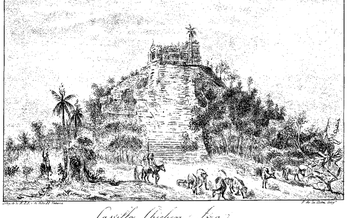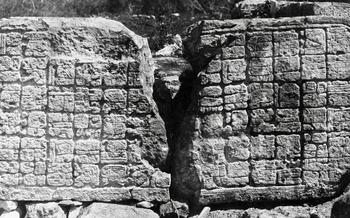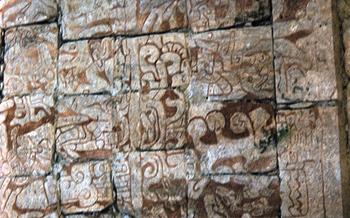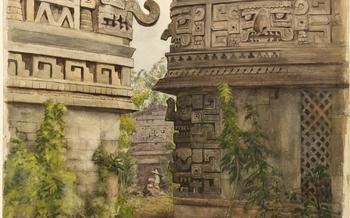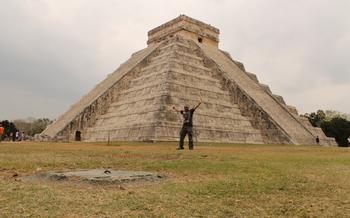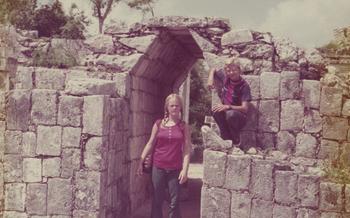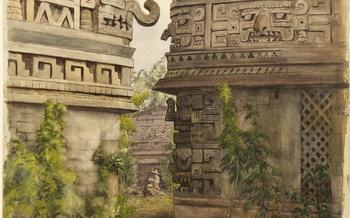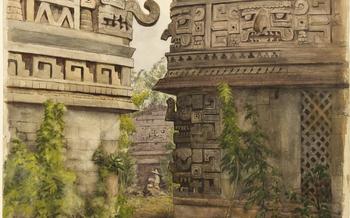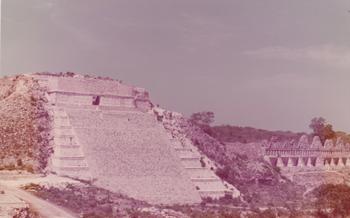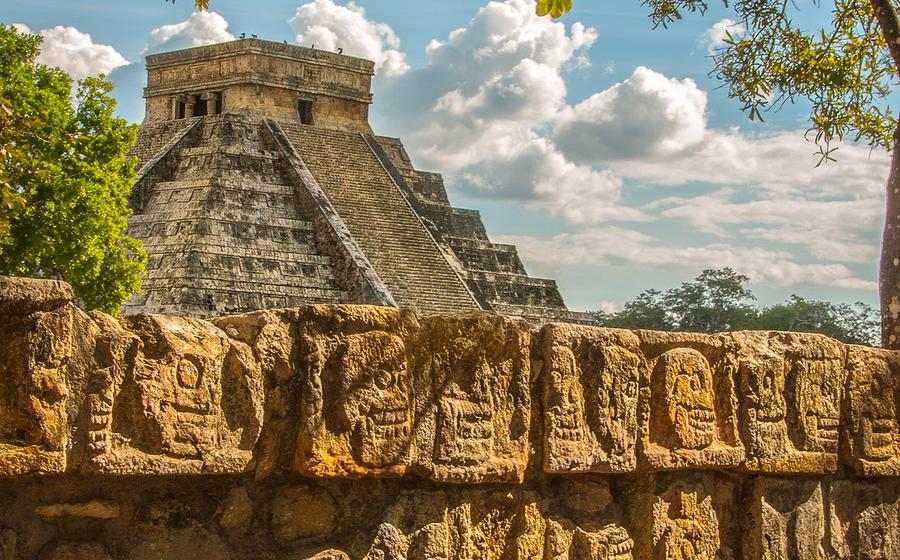
Merida
- Chichen Itza: A Majestic Mayan Legacy
- Exploring Merida: The Cultural Heart of Yucatan
- Visiting the Cenotes: Nature's Wonders in Yucatan
- Indulging in Local Cuisine and Markets
- Exploring the Mayan Heritage
- Finding Unique Souvenirs and Handicrafts
- Experiencing Traditional Festivals and Celebrations
- Unveiling the Mysteries of the Sacred Cenote
- Learning Spanish: A Key to Local Interactions
- Getting Around: Transportation Options
- Staying Safe and Healthy
- Immersive Accommodation Options
- Budget Tips for Savvy Travelers
- Off-the-Beaten-Path Experiences
- Insider Tip: Unveiling the Secret Cenote
Chichen Itza: A Majestic Mayan Legacy
Amidst the vibrant tapestry of Mexico's cultural heritage, Chichen Itza stands as a testament to the ingenuity and grandeur of the Mayan civilization. This ancient city, nestled in the heart of the Yucatan Peninsula, played a pivotal role in the political and religious landscape of the Maya, leaving behind a legacy of architectural wonders that continue to captivate visitors to this day.
History and Significance:
Chichen Itza's origins can be traced back to the 6th century AD when the Maya established a thriving settlement in the region. Over the centuries, the city grew in prominence, becoming one of the largest and most influential centers of the Maya civilization. It reached its peak during the Classic period (800-1100 AD), when it served as the capital of the Maya League of Mayapan.
The city's strategic location, at the crossroads of important trade routes, contributed to its rise as a commercial hub. It was also a center of religious and cultural significance, with various temples, ball courts, and cenotes (natural sinkholes) serving as venues for sacred rituals and ceremonies.
Location and Accessibility:
Chichen Itza is situated in the eastern part of the Yucatan Peninsula, approximately 120 kilometers (75 miles) east of Merida, the capital of the state. It is easily accessible by road, with well-maintained highways connecting it to major cities and towns in the region.
Must-See Landmarks:
Among the many awe-inspiring structures that dot the ancient city, several stand out as must-see landmarks for visitors to Chichen Itza.
-
El Castillo: This iconic pyramid, also known as the Temple of Kukulcan, dominates the city's skyline. Its majestic architecture, featuring 365 steps (representing the days of the year) and intricate carvings depicting feathered serpents, makes it one of the most recognizable landmarks of the Maya civilization.
-
The Temple of Kukulcan: Located at the northern end of the Great Plaza, this temple is dedicated to the feathered serpent god Kukulcan. Its impressive facade features a series of carved panels depicting scenes from Mayan mythology, offering a glimpse into the religious beliefs of the Maya.
-
The Great Ball Court: Situated to the west of El Castillo, this massive ball court is a testament to the Maya's passion for the ancient Mesoamerican ball game. It is the largest ball court in the Americas, measuring over 168 meters (550 feet) in length, and features intricate carvings and sculptures that provide insights into the game's rituals and significance.
Exploring Merida: The Cultural Heart of Yucatan
Merida, the capital city of Yucatan, is a captivating blend of colonial charm, Mayan heritage, and vibrant culture. Founded in 1542, Merida is a treasure trove of historical landmarks, architectural wonders, and unique experiences.
Begin your exploration with a stroll along the Paseo de Montejo, a grand boulevard adorned with opulent mansions and historic buildings. Marvel at the neoclassical facades, intricate tilework, and vibrant colors that line this iconic avenue.
At the heart of the city lies the Plaza Grande, a bustling square surrounded by significant landmarks. The imposing Merida Cathedral, with its Gothic Revival architecture, dominates the plaza, while the Palacio de Gobierno, with its colorful murals depicting Mayan history, offers a glimpse into the region's rich past.
Immerse yourself in the vibrant local culture at the Mercado Lucas de Galvez, a bustling market where vendors sell traditional handicrafts, colorful textiles, and an array of local delicacies. Indulge in the flavors of Yucatan at the Mercado San Benito, a culinary paradise where you can sample regional specialties such as cochinita pibil, panuchos, and salbutes.
Explore the city's Mayan heritage at the Gran Museo del Mundo Maya, which houses an extensive collection of artifacts and exhibits showcasing the ancient civilization's history, culture, and traditions.
Discover the charm of Merida's neighborhoods, each with its unique character. Wander through the narrow streets of Santiago, lined with colonial-era houses and charming cafes, or visit the colorful neighborhood of Santa Ana, known for its traditional Mayan traditions and vibrant street art.
Whether you're exploring its historical landmarks, immersing yourself in its vibrant culture, or indulging in its culinary delights, Merida is a city that will captivate your senses and leave you with lasting memories.
Visiting the Cenotes: Nature's Wonders in Yucatan
Yucatan's cenotes are natural wonders formed by the collapse of limestone bedrock, revealing stunning underground caverns filled with crystal-clear water. These sacred sinkholes hold immense geological significance and play a crucial role in the region's water supply and ecosystem.
Must-Visit Cenotes near Chichen Itza and Merida:
-
Ik Kil Cenote: Situated near Chichen Itza, Ik Kil is a mesmerizing cenote surrounded by lush vegetation and towering cliffs. Visitors can swim, dive, or simply relax on the platforms while admiring the breathtaking scenery.
-
Cenote Suytun: Located near the town of Valladolid, Cenote Suytun is a hidden gem with a unique charm. It features a series of interconnected chambers and tunnels, offering an adventurous exploration experience for divers and snorkelers.
-
Cenote Xkeken: This cenote, situated close to Merida, is known for its crystal-clear water and its stunning stalactite and stalagmite formations. Visitors can enjoy swimming, diving, or simply bask in the natural beauty of this underground oasis.
Activities to Enjoy:
-
Swimming and Diving: Cenotes offer a refreshing escape from the tropical heat, inviting visitors to plunge into their crystal-clear waters. Snorkeling and scuba diving enthusiasts can explore the underwater world, discovering diverse marine life and ancient Mayan artifacts.
-
Exploring the Underground World: Cenotes often feature intricate cave systems, allowing visitors to embark on a spelunking adventure. Guided tours provide insights into the geological formations and the unique ecosystems that thrive within these underground chambers.
Safety Tips and Precautions:
-
Respect the Environment: Cenotes are fragile ecosystems that require preservation. Avoid using sunscreen or insect repellent before entering the water, as chemicals can harm the delicate aquatic life.
-
Be Aware of Depth: Some cenotes can be deep, so it's crucial to assess the depth before diving or jumping. Always enter the water slowly and carefully.
-
Wear Appropriate Footwear: Cenote floors can be slippery, so wearing water shoes or sandals with good traction is recommended to prevent accidents.
Indulging in Local Cuisine and Markets
A trip to Mexico is incomplete without savoring the delectable flavors of Yucatecan cuisine. This region boasts unique culinary treasures that blend Mayan, Spanish, and Caribbean influences. One must-try dish is cochinita pibil, a slow-roasted pork dish marinated in achiote paste and wrapped in banana leaves. Panuchos and salbutes, fried tortillas topped with various fillings like beans, meat, and vegetables, are also local favorites.
To immerse yourself in the local culinary scene, visit the bustling markets of Merida. Mercado Lucas de Galvez and Mercado San Benito offer a vibrant array of fresh produce, spices, handicrafts, and traditional dishes. Engage with the friendly vendors, sample exotic fruits, and savor the aromas of freshly made tortillas. Remember to brush up on your bargaining skills, as negotiating prices is a common practice in these markets.
Insider Tip:
- Try the refreshing "agua fresca" drinks, made from natural fruits like hibiscus, tamarind, or horchata.
- Respect local customs by dressing modestly and asking permission before taking photos in the markets.
- Learn a few basic Spanish phrases like "gracias" (thank you) and "cuánto cuesta?" (how much does it cost?) to enhance your interactions with the locals.
Exploring the Mayan Heritage
The Yucatán Peninsula is a treasure trove of ancient wonders, a land where the spirit of the Maya civilization still lingers. Their legacy is etched into the stones of majestic pyramids, intricately carved sculptures, and the vibrant traditions that continue to thrive.
A visit to Uxmal, a sprawling Mayan city nestled amidst lush jungles, is a journey back in time to witness the splendor of this enigmatic civilization. Gaze upon the Great Pyramid, a towering testament to Mayan architectural prowess and climb its steep steps to experience a breathtaking view of the surrounding rainforest.
Venture to Coba, a hidden gem less crowded than its famous counterparts. Embark on a thrilling bike ride through the dense jungle, discovering ancient pyramids and stelae tucked away in the undergrowth. Ascend Nohoch Mul, the tallest pyramid on the Yucatán Peninsula, and let the panoramic vista from its summit transport you to another era.
Ek Balam, another off-the-beaten-path site, offers a unique glimpse into Mayan history. Explore its well-preserved structures, including the Acropolis and the Oval Palace, and marvel at the intricate carvings adorning its temples. Discover the sacred cenote, a natural well that once served as a water source and a place of spiritual significance for the Maya.
To truly understand the Maya, immerse yourself in their living traditions. Visit a local village and witness the continuation of ancient customs, such as traditional weaving, pottery-making, and the preparation of traditional dishes using time-honored techniques. Engage with the local Maya, listen to their stories, and gain a deeper appreciation for their rich heritage.
Finding Unique Souvenirs and Handicrafts
A trip to Mexico is incomplete without taking home a piece of its rich cultural heritage. Chichen Itza and Merida offer a treasure trove of unique souvenirs and handicrafts that reflect the region's Mayan heritage and vibrant traditions.
Must-Visit Shops and Markets for Authentic Items
El Bazar de Artesanías de Chichen Itza: Located near the ancient ruins, this market is a hub for authentic Mayan handicrafts, including intricately carved wooden masks, colorful woven textiles, and traditional pottery.
Mercado Lucas de Galvez in Merida: This bustling market is a melting pot of local flavors and crafts. Find hand-embroidered huipiles (tunics), hammocks, and leather goods, as well as fresh produce and local delicacies.
Mercado San Benito in Merida: This iconic market is a feast for the senses, with stalls selling everything from traditional clothing and souvenirs to exotic fruits and spices.
Supporting Local Artisans and Preserving Cultural Heritage
Buying local crafts not only adds a touch of authenticity to your souvenirs but also supports the livelihood of skilled artisans and helps preserve traditional techniques. Look for items with the "Hecho en Mexico" (Made in Mexico) label to ensure their authenticity.
Tips for Bargaining and Ensuring Fair Trade Practices
Be Polite and Respectful: Always approach vendors with a smile and a "Buenos dias" (Good morning) or "Buenas tardes" (Good afternoon).
Start with a Fair Offer: Don't be afraid to negotiate, but be reasonable and start with a fair price.
Ask About the Artisans: Show your interest in the crafts and ask about the artisans who made them. This shows your respect for their work.
Buy in Bulk: If you're buying multiple items from the same vendor, ask for a discount.
Support Fair Trade Organizations: Look for shops and cooperatives that promote fair trade practices and ensure that artisans are fairly compensated for their work.
Experiencing Traditional Festivals and Celebrations
Mexican festivals, with their vibrant colors, lively music, and delicious food, offer a rich immersion into the country's cultural heritage. Chichen Itza and Merida come alive during these celebrations, providing visitors with an unforgettable experience.
Must-attend Festivals:
-
Chichen Itza Spring Equinox Festival: Witness the spectacular play of light and shadow as the sun aligns with the El Castillo pyramid, creating a mesmerizing serpent-like effect.
-
Yucatan Carnival: Immerse yourself in the colorful parades, traditional dances, and lively music that fill the streets during this pre-Lenten celebration.
-
Merida's Hanal Pixan: Experience the unique "Day of the Dead" festivities, where families honor their deceased loved ones with elaborate altars, food offerings, and colorful decorations.
Participating in the Festivities:
-
Join the locals in traditional dances like the "jarana" and "vaquerías," where you can learn the lively steps and immerse yourself in the infectious rhythm.
-
Indulge in the delectable local cuisine, from mouthwatering cochinita pibil to sweet and crispy churros, while enjoying live music and performances.
Tips for Respectful Participation:
-
Dress appropriately, respecting local customs and traditions. Avoid wearing revealing or disrespectful clothing.
-
Be mindful of your behavior, avoiding any actions that may be considered disrespectful or disruptive to the festivities.
-
Ask permission before taking photos or videos of people, especially during religious or sacred ceremonies.
-
Embrace the opportunity to interact with locals, ask questions, and learn about the cultural significance of the celebrations.
Unveiling the Mysteries of the Sacred Cenote
At the heart of Chichen Itza lies a mesmerizing natural wonder that holds profound cultural and historical significance for the ancient Mayans: the Sacred Cenote. This deep, circular sinkhole filled with crystal-clear water was considered a gateway to the underworld and a place of communication with the gods.
According to Mayan beliefs, the cenote was a sacred site where rituals, offerings, and sacrifices were performed to appease the gods and ensure the well-being of the community. It was believed that the cenote held mystical powers and was a channel through which the Mayans could connect with their ancestors and seek guidance from the divine.
Today, visitors can witness the remnants of these ancient rituals by observing the many artifacts and offerings that have been recovered from the cenote's depths. These include jade and gold jewelry, ceramic vessels, and even human remains, all of which provide a glimpse into the spiritual and religious practices of the Mayans.
To experience the Sacred Cenote in all its glory, visitors can descend the steep staircase that leads to the water's edge. Here, they can swim in the refreshing waters and admire the stunning underwater rock formations. It is not uncommon to see colorful fish darting among the stalactites and stalagmites, adding to the mystical ambiance of the cenote.
While swimming in the Sacred Cenote is a truly unforgettable experience, it is important to be mindful of the site's cultural and historical significance. Visitors are asked to respect the sanctity of the cenote and refrain from loud noises or disruptive behavior. It is also important to avoid touching or removing any artifacts or offerings that may be found in the water.
By observing these guidelines, visitors can help preserve the integrity of this sacred site and ensure that future generations can continue to appreciate its beauty and cultural significance.
Learning Spanish: A Key to Local Interactions
Venturing into Mexico, particularly in Chichen Itza and Merida, offers a rich opportunity to immerse yourself in the local culture. While English is widely spoken in tourist areas, embracing basic Spanish phrases can significantly enhance your experience and create deeper connections with the locals.
Learning Spanish, even at a beginner level, demonstrates respect for the local language and customs. It allows you to engage in meaningful conversations, ask for directions, order food, and navigate markets more confidently. Locals appreciate the effort and are often more willing to assist and share their stories when you make an effort to communicate in their language.
There are numerous resources available to help you learn Spanish. Consider taking online classes, using language learning apps, or hiring a local guide who can provide personalized lessons. Immerse yourself in the language by listening to local music, watching Mexican films with subtitles, and reading local newspapers or books.
The benefits of learning Spanish extend beyond communication. It opens doors to understanding the local culture, traditions, and history. You'll gain a deeper appreciation for the warmth and hospitality of the Mexican people and leave with a newfound respect for the richness of their language and heritage.
Getting Around: Transportation Options
Venturing through Chichen Itza and Merida requires seamless transportation. Public transport, consisting of buses and colectivos (shared vans), offers an affordable and local experience. Buses connect major cities and towns, while colectivos navigate smaller routes, providing an immersive cultural encounter. Taxis are readily available, but negotiating fares beforehand is crucial.
For independent travelers, renting a car grants the freedom to explore at your own pace. However, consider the pros and cons carefully. While driving offers flexibility, road conditions can be unpredictable, and parking may be challenging in busy areas.
Guided tours are an excellent option for those seeking convenience and historical insights. Professional guides provide valuable information, ensuring you don't miss any hidden gems. Plus, tours often include transportation, eliminating the hassle of navigating unfamiliar routes.
Remember, whether you choose public transport, car rental, or guided tours, always prioritize safety. Be cautious of scams and ensure your chosen transportation is reliable and reputable.
Staying Safe and Healthy
Navigating a foreign country requires prioritizing safety and well-being. In Mexico, general precautions include avoiding isolated areas, being aware of your surroundings, and keeping valuables secure. Common scams often target tourists, so it's wise to be vigilant and avoid unsolicited services or offers. Researching reputable tour operators and transportation companies is crucial.
Health precautions are equally important. Vaccinations for hepatitis A and typhoid are recommended, and insect repellent is essential for warding off mosquitoes, especially during the rainy season. Drinking bottled or purified water is a must, as tap water can be unsafe.
Mexico's warm climate demands hydration to prevent heatstroke. Wearing lightweight, loose clothing and seeking shade during the hottest hours of the day is advisable. Respecting local customs and avoiding offensive behavior ensures a harmonious experience.
Immersive Accommodation Options
Chichen Itza and Merida offer a range of unique accommodation options that allow travelers to immerse themselves in the local culture and history. One can opt for traditional haciendas, which offer a glimpse into the region's colonial past. These beautifully restored estates often feature spacious rooms, lush gardens, and swimming pools, providing a tranquil retreat. Alternatively, staying in a Mayan village offers a chance to experience the vibrant traditions and daily life of the indigenous communities. These villages provide basic but comfortable accommodation, allowing travelers to connect with local families and learn about their customs. Whether seeking luxury or authenticity, there are accommodation options in Chichen Itza and Merida that cater to every traveler's preference.
Budget Tips for Savvy Travelers
Venturing into the vibrant culture and ancient wonders of Chichen Itza and Merida doesn't have to break the bank. Embrace your inner savvy traveler with these budget-friendly tips:
-
Feast on Street Food: Indulge in the delectable flavors of Yucatecan cuisine without splurging. Street food stalls offer mouthwatering tacos, panuchos, and salbutes at a fraction of the cost of restaurants.
-
Explore Free Attractions: Discover the hidden gems of Chichen Itza and Merida without spending a dime. Many museums, parks, and cultural centers offer free admission, allowing you to soak up history and culture without straining your wallet.
-
Public Transportation: Embrace the local vibe and utilize public transportation to navigate the region. Buses and colectivos are affordable and convenient, connecting you to major attractions at a fraction of the cost of taxis or rental cars.
-
Negotiate Prices: Don't be afraid to bargain at markets and shops. Politely negotiating prices is a cultural norm and can lead to significant savings on souvenirs, handicrafts, and guided tours.
-
Cook Local Delicacies: Save money on dining out by purchasing fresh ingredients from local markets and cooking your own meals. Yucatecan cuisine is easy to prepare and bursting with local flavors.
Off-the-Beaten-Path Experiences
Beyond the renowned attractions, Yucatan offers a wealth of hidden gems waiting to be discovered. For those seeking a more immersive and unique experience, venturing off the beaten path is highly rewarding. Explore lesser-known Mayan ruins tucked away in the lush jungle, such as Sayil, Labná, or Xlapak. These sites offer a more intimate and authentic encounter with ancient Mayan history, free from the crowds.
Local neighborhoods and markets also hold hidden treasures. Wander through vibrant streets lined with colorful houses, visit traditional markets overflowing with local produce, handicrafts, and street food. Engage with friendly locals, learn about their daily lives, and uncover hidden culinary delights.
To truly escape the crowds and find tranquility, seek out secluded cenotes nestled in the heart of the jungle. These hidden gems offer a pristine and serene environment for swimming, snorkeling, or simply relaxing in nature's embrace. Ask locals for recommendations or do some research online to discover these hidden oases.
Insider Tip: Unveiling the Secret Cenote
Beyond the popular cenotes, there lies a hidden gem known only to a few - the Secret Cenote. Nestled deep within the lush Yucatan jungle, this secluded oasis offers a tranquil escape from the crowds.
To find this hidden gem, you'll need to venture off the beaten path and follow a winding dirt road that leads to a small Mayan village. Ask any local for directions, and they'll gladly guide you to the cenote's entrance.
Descend a narrow staircase carved into the limestone rock, and you'll be greeted by a breathtaking sight - a crystal-clear pool of water surrounded by towering jungle vegetation. The sunlight filters through the canopy, casting a mystical glow on the cenote's surface.
Take a moment to appreciate the tranquility of this hidden paradise. Float in the refreshing water, marvel at the intricate stalactites and stalagmites, and let the sounds of nature wash away your worries.
Remember to respect the sanctity of this special place. Avoid using sunscreen or insect repellent that could harm the delicate ecosystem. Leave no trace behind, and share this secret responsibly to preserve its pristine beauty for future generations.
